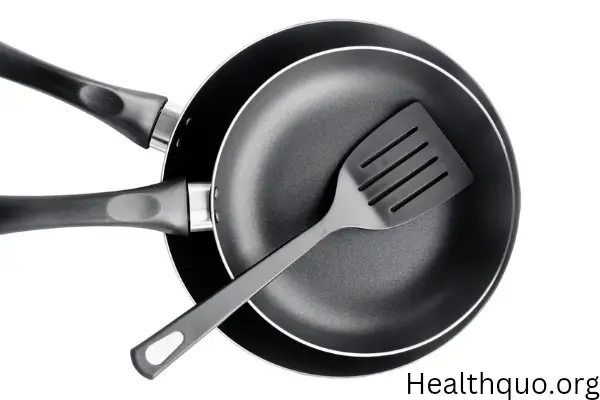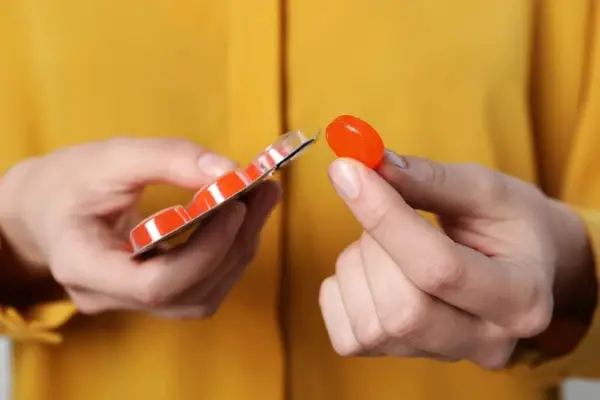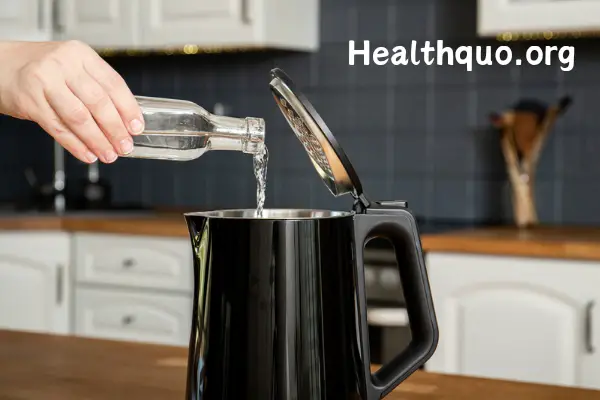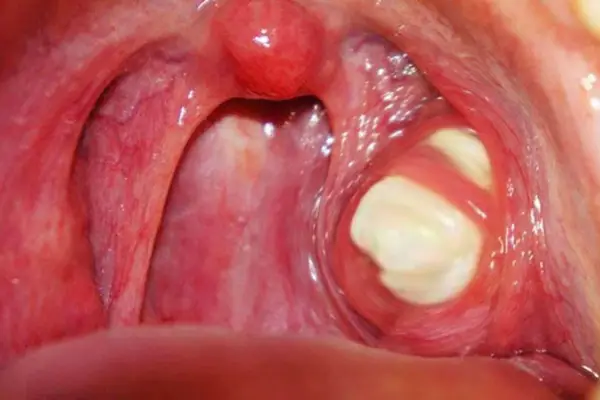If you have a non-stick cookware such as a frying pan, there’s a high chance that you have ingested traces of this coating in your food but this poses little health risks to humans.
Today’s non-stick coating cookware contains PFAS chemicals, like PTFE, Gen X, and PFBS which only pose health risks when degraded from overheating. However, non-stick coatings like Teflon are highly stable, and upon ingestion, they pass through the digestive system without being absorbed and then expelled in feces.
A major source of exposure to these chemicals is wastewater released from industrial facilities, not our household cookware.
It is important to know that PTFE-coated cookware has been known to release harmful fumes when overheated which can be inhaled leading to polymer fever fever with symptoms similar to flu.
Despite the ban of PFOA and PFOS from manufacturing processes due to health risks, the introduction of GenX and PFBS hasn’t necessarily provided a safer alternative. Besides, some old or imported cookware may contain PFOA and PFOS.
GenX has been linked to harmful effects in animal studies, including impacts on the kidney, liver, and blood, as well as developmental issues. The EPA is carrying out various toxicity assessments on GenX and PFBS, hence the safety of these compounds remains uncertain due to limited long-term human health data.
Polytetrafluoroethylene (PTFE) Concerns
Non-stick cookware is primarily made from materials coated with polytetrafluoroethylene (PTFE), known commercially as Teflon, or other per- and poly-fluoroalkyl substances (PFAS). These coatings make the cookware easy to clean and reduce the need for cooking oils.
PTFE itself is considered inert and non-toxic when ingested in small amounts because it doesn’t break down or react in the body and is likely to pass through the digestive system without being absorbed.
However, concerns about the safety of these materials, especially when overheated, have led to debates about their use. Some studies suggest that overheating PTFE-coated cookware can release toxic polymer fumes.
Inhaling these fumes, especially when it is overheated, can lead to a condition known as “polymer fume fever.” This condition is characterized by flu-like symptoms such as fever, chills, and body aches. It’s important to use non-stick cookware within safe temperature ranges to avoid the release of these harmful fumes.
Hexafluoropropylene Oxide Dimer Acid (Gen X) and Perfluorobutane Sulfonic Acid (PFBS) Concerns
GenX chemicals are used as a replacement for PFOA, and PFBS for PFOS, both of which are part of the PFAS family of chemicals. These substances have been linked to various adverse health effects based on animal toxicity studies.
For GenX chemicals, the health effects include liver, kidney, and immune system issues, developmental effects, and a potential link to cancer, with the most sensitive non-cancer effect being liver lesions.
PFBS has been associated with effects on the thyroid, reproductive organs and tissues, the developing fetus, and the kidney, with the most sensitive non-cancer effect being a decrease in serum total thyroxine (US EPA).
The EPA has issued health advisories for these chemicals, establishing levels intended to protect the public, including sensitive populations, from adverse health effects resulting from lifetime exposure through drinking water.
Perfluorooctanoic acid (PFOA) and Perfluorooctane Sulfonic acid (PFOS) Concerns
PFOA and PFOS were used in the manufacturing process of some older non-stick cookware products. These PFAS chemicals have raised health concerns, and studies have linked them to several health issues, including cancer, liver damage, infertility, reduced child weight, and disruption of thyroid function.
Most major manufacturers have phased out the use of PFOA and PFOS in non-stick cookware production due to EPA regulations as of around 2015, due to health concerns. It has been replaced with a chemical, Gen X and PFBS, which has equally raised some growing safety and environmental concerns.
Over 5,021 sites across the U.S. are contaminated with PFAS, including PFOA and PFOS, as reported by the EWG in February 2024. This is based on EPA’s UCMR 5 program findings. Legal action has been notable in this area, with DuPont settling for $671 million over Teflon product-related PFOA contamination, affecting many in West Virginia and Ohio
How Does Non-Stick Coating End Up Being Ingested?
The non-stick coating has to be detached from the cookware for ingestion to occur. This is made possible by the gradual degradation of this material. This degradation often results from overheating; when non-stick pans are heated beyond their safe temperature limit—usually around 500°F (260°C)—the coating can begin to break down, potentially releasing particles into the food being cooked. As we have all experienced, the use of metal utensils can scratch and chip the non-stick surface over time, causing small particles of the coating to mix with food.
Signs of wear and tear on non-stick cookware are usually visible. These can include visible scratches, peeling, flaking of the surface, or exposure of the shiny metallic material beneath the coating. Once these signs appear, the risk of ingesting the non-stick material increases, and it’s generally advised to consider replacing the cookware even though the associated danger is minimal.
How To Reduce The Ingestion Of Non Stick Coating
As we discussed, there are certain health risks associated with the inhalation of polymer fumes from PTFE degradation or ingestion of other PFAS.
So, it is important to avoid using high heat and refrain from preheating an empty non-stick pan, as this can quickly lead to overheating and potential degradation of the coating.
Opt for wooden, plastic, or silicone utensils over metal to prevent scratches that can lead to flaking.
If the non-stick surface starts to deteriorate, consider replacing it to avoid the risk of ingesting flakes.





